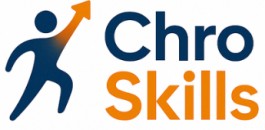
Understanding 'Coaching Out' in HR Leadership
Grasping the Concept of Coaching Out in HR
Navigating the responsibilities of a Chief Human Resources Officer often requires a nuanced understanding of various strategies to optimize employee performance and organizational health. Among these strategies, 'coaching out' stands as a crucial yet challenging component. As defined within the realm of human resources, coaching out refers to the process of guiding a team member to acknowledge when a current role no longer aligns with their professional goals or the company's needs, thereby prompting a transition. Understanding when and how to implement coaching out requires a deep comprehension of the individual and organizational dynamics involved. For a CHRO, this means discerning the delicate balance a leader must maintain in conversation with the coaching employee. The essence of this approach blends coaching, development, and alignment of both employee and organizational career goals. Key to successful coaching out initiatives is possessing the right leadership qualities to foster an understanding dialogue. It entails orchestrating a work environment and organizational culture where team members can openly discuss their career aspirations and performance problems without fear. In fostering this transparency, a CHRO builds a foundation for improvement plans that support the long-term success of both the individual and the organization. Join the conversation on effective training methods that can enhance these essential skills for CHROs, reinforcing their role as empathetic and strategic leaders.Key Skills Required for Effective 'Coaching Out'
The Foundation of Effective 'Coaching Out' Techniques
Understanding the intricacies of 'coaching out' within an organization is an essential aspect of human resources leadership. Successfully executing this process requires a blend of skills tailored specifically to address employee performance issues while promoting professional growth and organizational development.- Active Listening and Communication Skills: At the heart of effective coaching is the ability to actively listen to team members. This involves understanding their perspectives and offering thoughtful feedback. It's crucial to foster open communication so that employees feel comfortable sharing concerns, and HR leaders can assess performance problems effectively.
- Empathy and Emotional Intelligence: Balancing empathy with organizational needs is a critical skill. CHROs must be sensitive to employees’ career goals and personal challenges while also ensuring that company objectives are met. Displaying empathy can help alleviate anxiety and promote a positive work environment during the coaching process.
- Problem-Solving Abilities: Identifying performance issues and developing a performance improvement plan requires strong problem-solving skills. Human resources professionals should assess situations objectively and strategize solutions that align with both employees' and the organization's long-term interests.
- ICF Credential and Professional Development: Acquiring an ICF credential and engaging in ethics coaching are vital for HR leaders seeking to solidify their leadership qualities. Ongoing professional development courses can enhance the skills necessary for effective coaching, ensuring they remain relevant in evolving workplace environments.
- Setting Measurable Goals: Establishing clear and measurable goals is imperative in gauging success in coaching programs. These benchmarks provide a basis for evaluating employee performance and the overall impact on the company, aiding in future coaching and development strategies.
Building a Supportive Framework for 'Coaching Out'
Creating a Foundation for Effective Coaching Strategies
In the realm of human resources, building a supportive framework for 'coaching out' initiatives is paramount. A comprehensive plan that integrates leadership qualities and organizational resources can significantly impact both individual career growth and overall company performance. This involves developing a robust support system that encourages open communication and trust between leadership and team members.
An effective 'coaching out' program begins with a clear understanding of the roles and responsibilities within the organization. This includes outlining expectations for employee performance and establishing clear career goals. By focusing on development, human resources leaders can foster a work environment that prioritizes long-term growth and professional development.
Integrating a Structured Approach
Designing a structured improvement plan is essential for addressing performance problems. Such a plan should include a performance improvement course that supports employees in achieving their desired career objectives. Incorporating certified coaching practices, like those with an ICF credential, can further enhance the effectiveness of the development process. Ensuring that team members have access to relevant resources, such as a comprehensive events calendar, can also promote continuous learning and future coaching opportunities.
Combining Empathy with Organizational Goals
A successful framework for 'coaching out' cannot function without empathy. Understanding human resources dynamics and addressing individual needs while considering broader organizational goals are key. Employing empathy not only facilitates improved employee performance but also aligns with the ethical standards crucial in HR leadership. Integrating principles of ethics coaching ensures a balanced approach that respects both the privacy policy and the organizational requirements.
By fostering a supportive environment that encourages employees to join in open dialogue about their work and career aspirations, organizations can effectively address performance issues and contribute to a positive work culture. A strategic approach to 'coaching out' supports not only the individual's growth but also elevates overall team performance, ultimately benefiting the organization in the long term. To delve further into this topic, you can explore the global movement of entrepreneurs and its implications on HR practices.
Balancing Empathy and Organizational Needs
Finding the Right Balance in HR Leadership
Balancing empathy with organizational needs is a crucial skill for any Chief Human Resources Officer (CHRO) engaged in 'coaching out' initiatives. This balancing act requires a deep understanding of both the human and business sides of the equation. While empathy involves understanding and being sensitive to the feelings and perspectives of employees, organizational needs often demand tough decisions that prioritize company goals.
As a CHRO, it is essential to approach each coaching situation with a clear understanding of the employee's role and performance within the organization. This involves actively listening to the employee's concerns and career goals while also considering the broader team dynamics and company objectives. By doing so, CHROs can develop a performance improvement plan that aligns with both the individual's professional development and the organization's long-term success.
Developing Leadership Qualities
Effective 'coaching out' requires strong leadership qualities. CHROs must demonstrate the ability to guide employees through challenging transitions, offering support and resources for future coaching and career development. This might include setting up a structured program for performance improvement or facilitating access to professional development opportunities.
Moreover, having an ICF credential can enhance a CHRO's credibility, providing a framework for ethics coaching and ensuring that coaching practices adhere to a privacy policy that respects the confidentiality of staff members. This builds trust and encourages open communication, which is vital for addressing performance problems and fostering a supportive work environment.
Aligning with Organizational Goals
In the course of 'coaching out,' it's important for CHROs to ensure that the coaching process is aligned with the organization's strategic objectives. This alignment helps in justifying the coaching efforts to other team members and stakeholders, ensuring that the process contributes to the overall performance improvement of the company.
Ultimately, the success of 'coaching out' initiatives depends on the ability to balance empathy with the need to meet organizational goals. By maintaining this balance, CHROs can effectively support their employees' transitions while driving the company towards its future aspirations.
Legal and Ethical Considerations in 'Coaching Out'
Navigating Legal and Ethical Boundaries
In the realm of human resources, especially when it comes to coaching out employees, understanding the legal and ethical boundaries is crucial. Chief Human Resources Officers (CHROs) must ensure that their actions align with both company policies and broader legal frameworks. This involves a deep comprehension of employment laws and the privacy policy that governs employee data.
CHROs need to be well-versed in the legal implications of performance improvement plans and employee terminations. It's essential to ensure that all actions taken are documented meticulously and comply with the organization’s guidelines to avoid any potential legal repercussions. This includes maintaining confidentiality and respecting the privacy of each team member involved in the coaching process.
Ethics in Coaching
Ethics coaching plays a significant role in the coaching out process. It requires balancing the needs of the organization with the career goals and well-being of the employee. CHROs must exhibit strong leadership qualities, ensuring that the coaching process is fair and transparent. The International Coaching Federation (ICF) credential can be a valuable asset here, providing a framework for ethical coaching practices.
Empathy is a key component in this process, as discussed in previous sections. CHROs must consider the long-term impact on the employee’s career while addressing performance problems. This involves creating an environment where employees feel supported in their professional development and are encouraged to improve their performance.
Balancing Organizational Needs
While it's important to support the development of individual employees, CHROs must also consider the needs of the organization. This involves ensuring that the coaching out process aligns with the company’s strategic goals and enhances overall team performance. By doing so, CHROs contribute to a positive work environment where both the organization and its people can thrive.
In summary, the legal and ethical considerations in coaching out are complex but essential. By adhering to these principles, CHROs can effectively manage the delicate balance between organizational needs and employee welfare, ultimately leading to a more harmonious and productive work environment.
Measuring Success in 'Coaching Out' Initiatives
Assessing the Outcomes of Coaching Initiatives
Measuring success in 'coaching out' endeavors is integral to understanding its impact on both the employee and the organization. Chief Human Resources Officers (CHROs) should systematically evaluate the effectiveness of these programs to ensure alignment with the company's long-term goals and employee development initiatives. Creating metrics for success requires balancing qualitative and quantitative data. Consider the following to effectively gauge your program's effectiveness:- Performance Improvement: Evaluate if there has been a noticeable uptick in employee performance. Has the staff member met their improvement plan goals over a set period? Success can be tracked through changes in key performance indicators related to their role within the organization.
- Retention Rates: Track team member retention pre and post-coaching program. A successful 'coaching out' approach should positive influence retention, mitigating costly turnover linked to unresolved performance problems.
- Career Development: Assess whether the employee has set and pursued new career goals, leveraging future coaching opportunities to enhance leadership qualities and skill sets.
- Feedback Mechanism: Implement feedback loops with employees and team members. Encouraging open dialogue ensures that coaching sessions align with employee expectations, will facilitate a supportive work environment and career development pathways.
- Employee Satisfaction: Use surveys or regular check-ins to gather insights on employee satisfaction and morale post-coaching sessions. Strong performance improvement should correlate with increases in workplace satisfaction.
- Organizational Impact: Consider how these initiatives affect organizational culture and leadership development within your teams. Look at metrics relating to team cohesion, morale, and advocacy for coaching initiatives.













